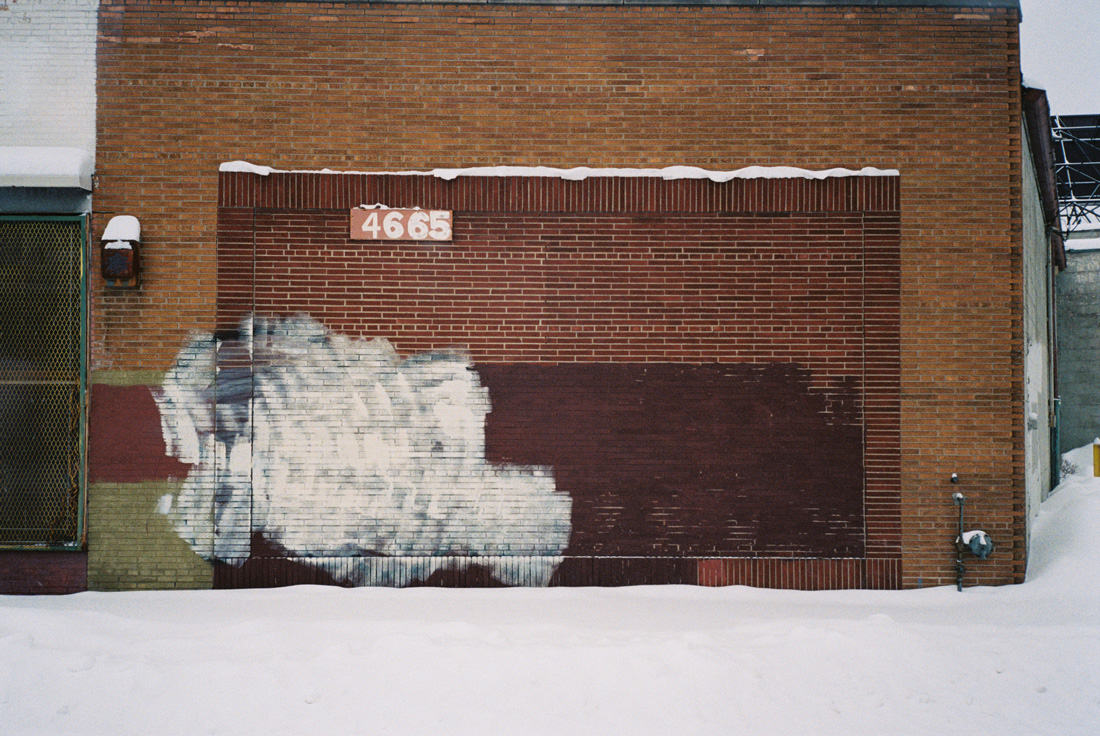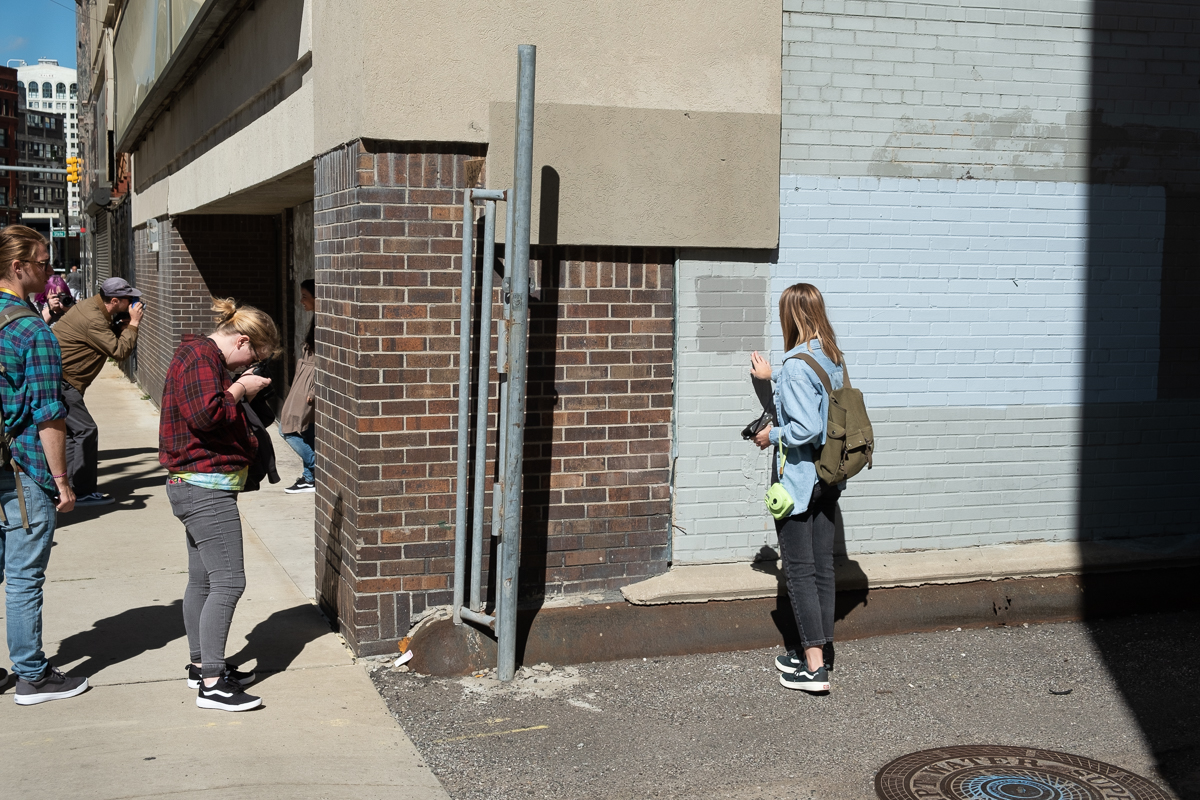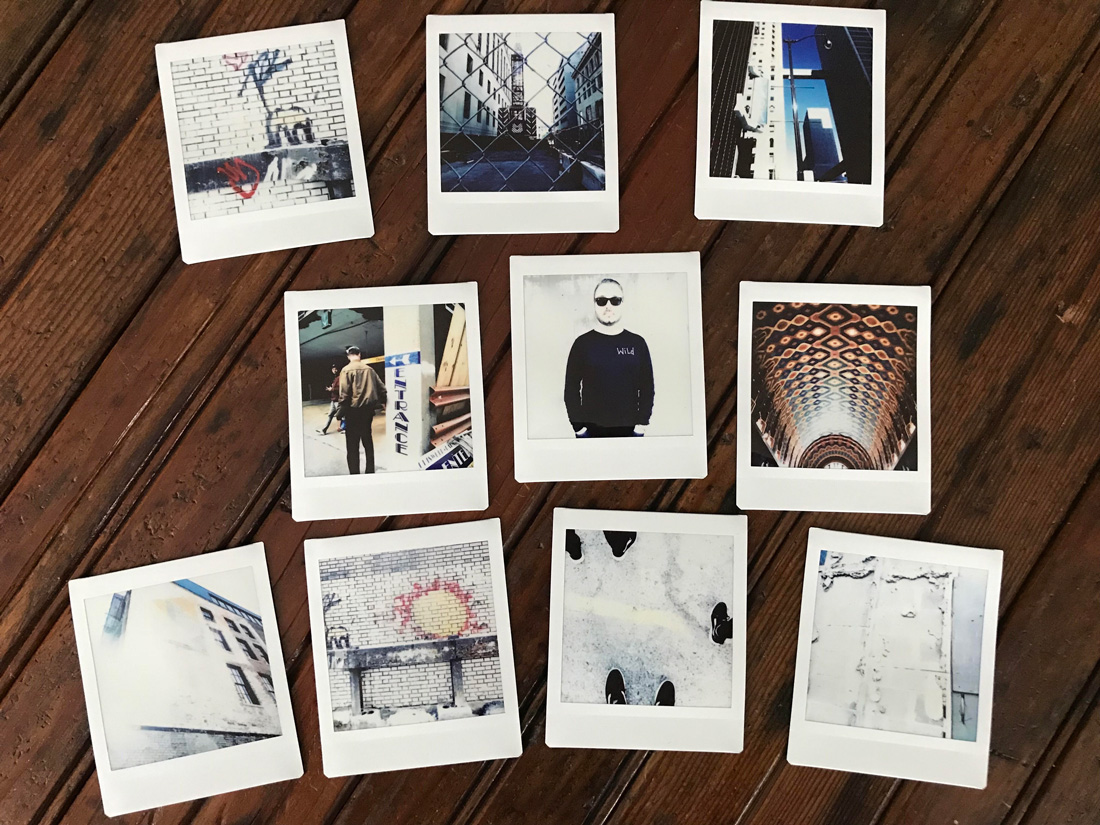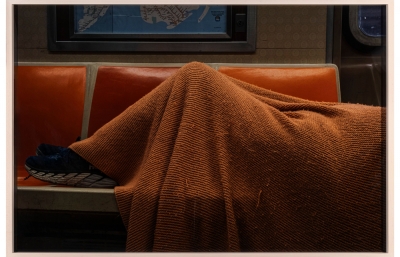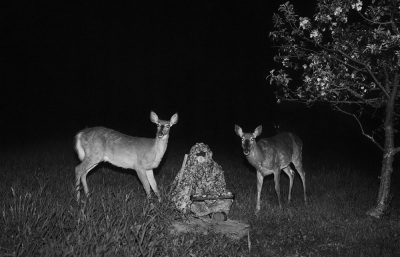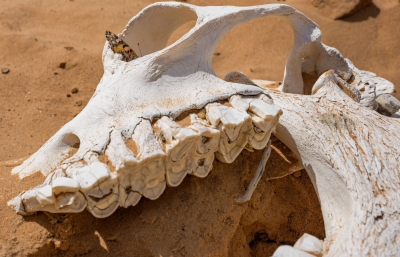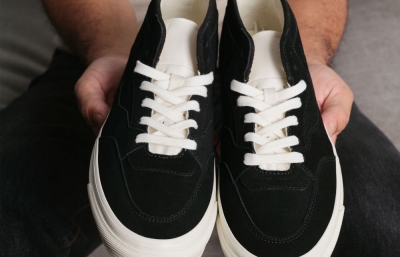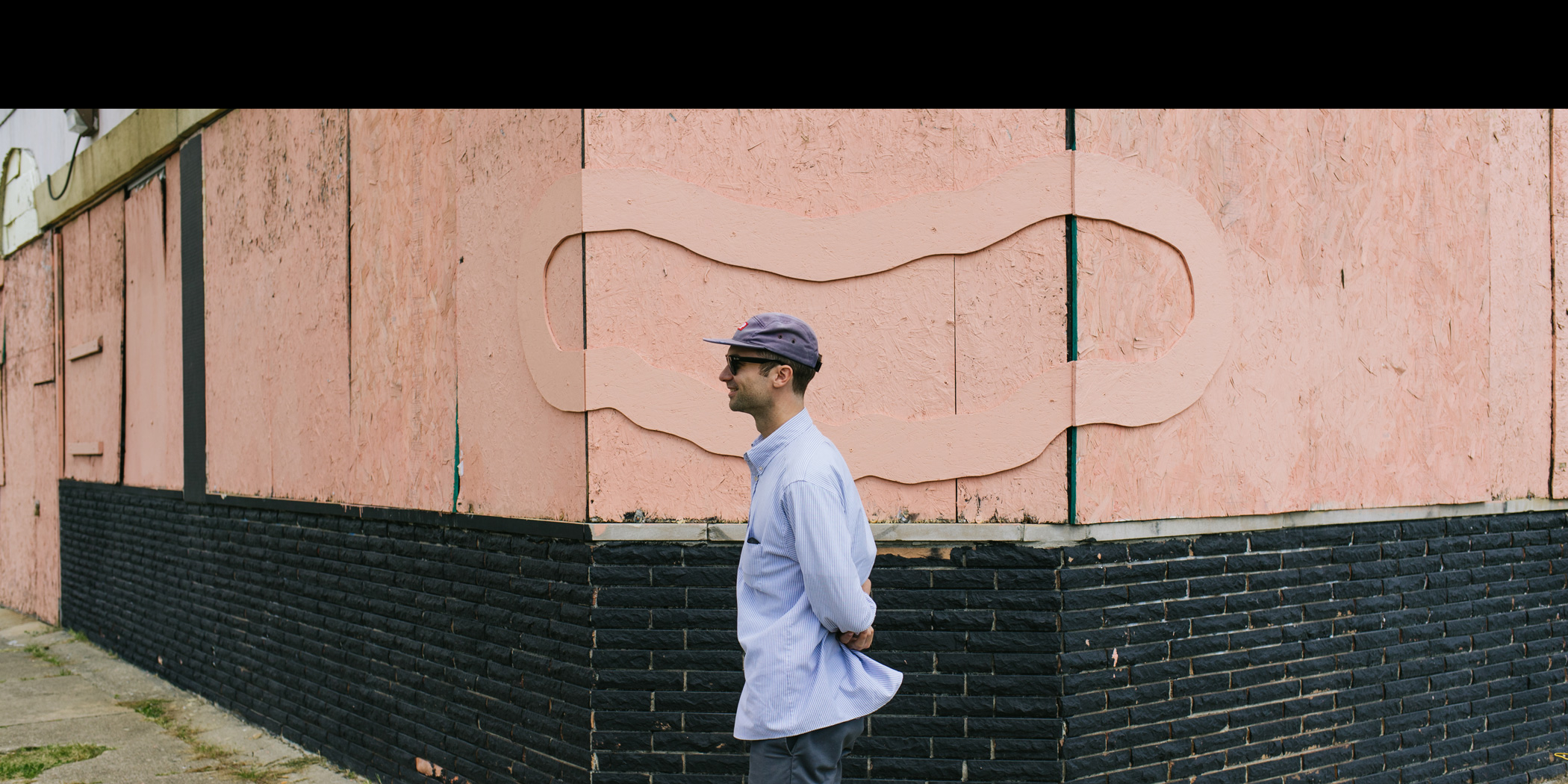
Vision Walk: DETROIT
With Nick Jaskey
We arE traveling around the country with VANS VISION WALKS, a series of workshops led by some of our favorite photographers in their home cities. This past weekend we spent the AFTERNOON with Nick Jaskey as he led participants on a walk through downtown Detroit. (Photo: Michael Baca)
"I always found myself most excited, or most interested when I felt like I had discovered something. That's what always did it for me," Nick Jaskey explained as he pointed to one of his giant wooden red circles peeking through a patch of trees on the side of the road. For Jaskey, photography has always been a tool of continual discovery, an integral part of his artistic practice. Many of the images he shoots of things he sees on the streets, become an inspiration for his paintings and collages, some of which find their way back onto the streets themselves. This communication and exchange with public space extend to us as well, to anybody admiring the details he captures in his photos. The details Jaskey discovers and relays open our eyes anew to our environment, and even to a stranger, walking down the street wondering why strange wavy red circles are appearing on buildings around town and in the woods down the street.
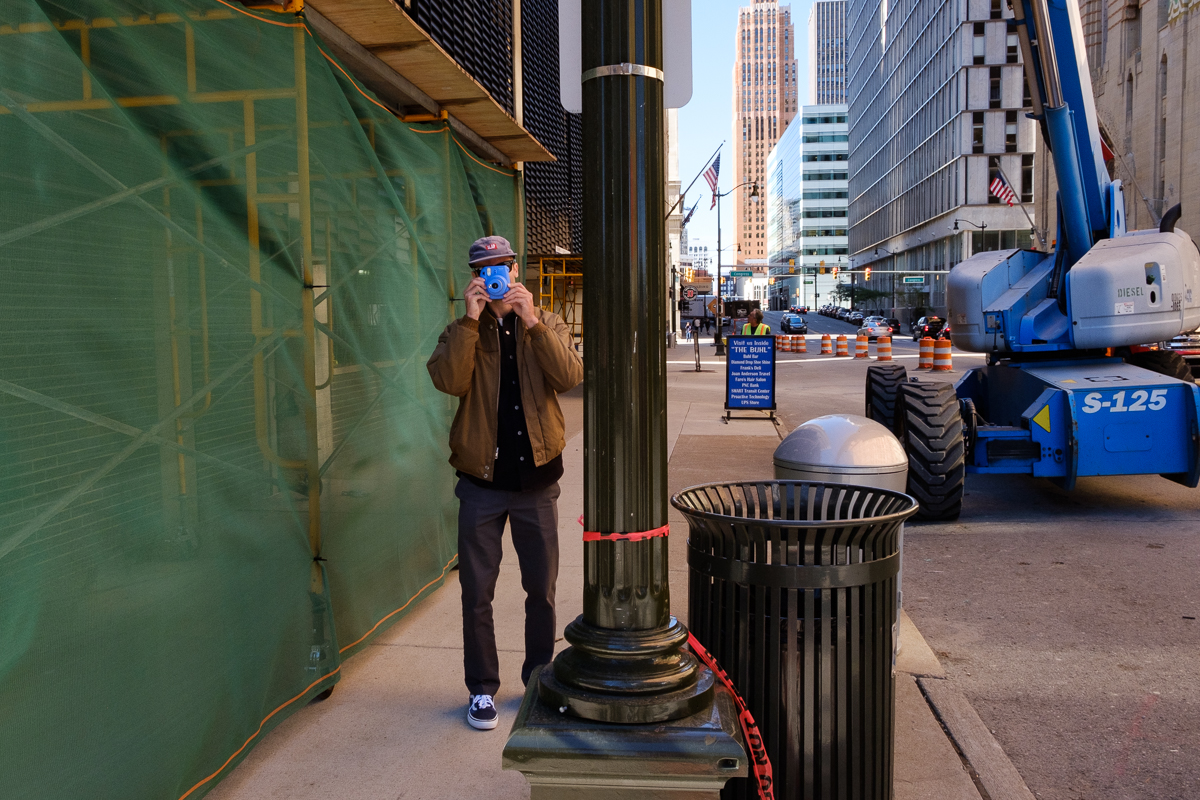
Alex Nicholson: Did you first get into photography through skateboarding?
Nick Jaskey: Yeah, initially I became interested in photography by looking at skate photos and skate magazines.
So did the photography come before the painting and art?
No, not really. I always drew and paint but skating around and exploring this city and other cities definitely led to thinking I should carry a camera. That's part of the reason why I've chosen to stick with and use point and shoot cameras. They fit in your pocket and they're not clunky and they don't take up space. They're really just basic tools, and that's what I've been using since. I think that skateboarding opens your eye up to this whole new landscape that people don't normally look at. I started to discover all these little subtle details too, that didn’t necessarily have anything to do with skateboarding. I didn't know exactly why I wanted to shoot these photos yet, but I knew that I should be documenting this stuff. That led me to carry little point and shoot cameras, or disposables. And then as the years went on, I started to realize like, "Oh, I'm continuing to do this and it's been ten or 15 years, 20 years and I kind of take this seriously.”
Skateboarding or riding a bike is usually the first taste freedom you get as a kid.
Absolutely, what's around the next corner, you know? And then you go to the next city and wow, there's a lot of different corners. And you’re making something out of nothing, creating spots. When you're really young, you don't know exactly what you're looking at, and then, as you get older, you realize, "Oh, look at all this other stuff too."
What kind of photographs were you taking in those days?
In the beginning, graffiti stood out to me and mark-making. I was interested in whatever was exciting, I was just trying to document it to remember it forever. I moved to New York City when I was 17 or 18, basically to skateboard, and when I was there I realized really quickly how special Detroit was. It took leaving to realize that. I'd been living in this really unique environment, in a really special time and place, and I didn't realize it because it was all that I knew. I think returning and being a little bit older and a little bit more developed in what I was looking for, that's when this series really started to happen for me, because I understood what I was looking for more and what was important to me and what my trip was gonna be.
"In order to make anything successful, whether it's a painting or a photograph, I think the real key to it is just to make it personal, and just to show your trip, and show how you feel, and what you're looking at. And if you're able to get that across in your photograph, or whatever your medium may be, that's successful work."
You often have to step away from a place and see it from the outside to appreciate it.
When I was growing up here I knew Detroit was different. I guess I didn't realize how Mad Max this shit was, how wild it was here. I knew it was slightly fucked up and had gone through some stuff, but I didn't realize it was that bad until I started to travel. It didn't make me dislike this place, it made me love it even more. I thought that I was lucky to have come up in this really special environment. My work through in through is a product of that.
Tell us about your book, Signs of Life.
I end up using a lot of the images that I shoot as reference or inspiration for my collages and paintings, so this whole book is just me documenting things that stand out, the mark making or signage that I think is unique or interesting. I'm not interested in anything that's refined or good, I like the more wonky, funky stuff that's kinda untrained. I just rework that into how my painting style is, but with paper. This is an ongoing series of where the photos go, and how they turn into more fine art.
When you're out taking photos, and you see something that interests you and you're taking the picture, are you picturing it like what it might look like in one of your collages or paintings?
Yeah, sometimes. It's funny because I used to work as a screen printer so I can really look at something and in two seconds break it down. It's a similar process to printmaking but it ends up being a painting or collage. I like it when people make magic happen out of nothing. The tools I use are simple. I'm just looking for the correct lighting, color, and composition in a rectangle. I feel like I've been recognized for photography because I was able to find something personal and find something unique to me, I'm not doing anything fancy. I think why people like my work and bought the book is because it was stuff that I noticed that people didn't take the time to look at more than once, and they were like, "Oh, this is kind of special." It's my view. It’s what I'm seeing. I'm interested in public space and outdoor environments. I'm not really interested in shooting photos of people, I don't do portraits, it's just a specific thing that I'm looking for: How people interact with their environment, intentionally or unintentionally.
What about these cut-out wood pieces?
This is a newer project. I make these things here in my studio and then go and install them in unused and forgotten spaces. I want the pieces to interact with the space, I don't just willy-nilly put them anywhere. I specifically work with the environment, and the idea of the project is to get the viewer to acknowledge unused space and maybe start thinking creatively. My goal with these things is to do enough of them where people start to see them when they are not even there, almost see a shadow on a wall or some type of red thing and assume it's this but it's not.
Where did the idea for the series come from?
When I bought this house, the old man who had lived here before had left all his tools and old junk in the garage. There was a jigsaw and it still worked so I was like, "Okay, I got this jigsaw, I got a bunch of scrap wood, and a bunch of red paint left over from a project I did…” So I just started cutting away at the scrap that I had. The first ones I made were just wonky shapes, they weren't the circles. It was similar to something that I would paint. It's a really fun thing to do and I really look forward to it. I actually can't stand it when I have them here in the studio because it just kills me, I just wanna go put them up. They're not really meant to be indoors and so that's why it's funny. People have been stealing them and shit now.
Off the streets?
Yeah, they're ruthless about it too. They'll cut the entire fucking wall out. I actually did one time that I didn't like but I couldn't get it off the wall because I used a construction adhesive and all this epoxy. It's really hard to take them down. I don't know how people get them down when they do.
Have you heard what has happened to any of them?
No, I haven't seen any. I'm waiting to go to a party and see one in someone's living room. I don't know where they are or who has them. I really want them to stick around. As I said, they're not for inside.

That’s actually pretty interesting though, it’s almost like it comes full circle.
It's funny to me what people find importance in. A lot of this stuff that I photograph is long gone, long forgotten. People don't look at it or give it the time of day, and I see it and I almost crash my car. It stops me in my tracks. I'm like, "Holy fuck! That's amazing."
The idea of that happening with something that I am making... I really like the idea of, "Oh before that was just a wall and now because it has a red circle on it, I find it important." That's hilarious to me. I love that because in all of my work, no matter what medium it's in, it's all about trying to make something happen with nothing, or with very limited tools and resources. I'm really trying to pull something out of thin air. I do that on purpose. When I find myself doing projects that have a budget, or I am given money to make something specific, the feeling isn't the same. When you have the time and the resources and the funding for something there's just no end. When do you stop when there's no end? For me, it's much easier for me to wrap my head around, "Jigsaws here, woods here, red paints here."
You have also started to install these in places other than on walls.
You know when you're driving by here this is kind of like an area that's like a void or something, it's not used for anything. It's just overgrown. No one pays any attention to it. I wanted to figure out a way to have one of these exist in a setting like that. When I was growing up I was always so curious about what had happened here, and more importantly, what is happening here? So I was always just looking for like different little clues about what people were up to. And I found that in like mark making and signage, intentionally and unintentionally, things that visually disrupt.
I always found myself most excited and interested when I felt like I had discovered something. That's what always did it for me. It felt like I was discovering something for the first time. Or I was acknowledging this thing that had been unacknowledged for who knows how long, you know? And I was giving it new life again, or preserving it through a photograph, or reworking it into a painting, being inspired by it in some way. I think that with this project, it's my take on putting that inspiration back out into the world. The things that inspire me, and catch me off guard, and keep me interested, I feel like kind of appear out of nowhere and exist in my eyes only or something. A lot of the stuff I find, I'm like "Fuck, this is too good to be true."
Do you get more joy out of seeing something and having it stop you in your tracks or the act of taking a picture and making something out of it?
A little bit of both. A big part of it for me is that I'm just hungry. I'm hungry to find things. I'm hungry to make things, that's what I'm here for. That's what makes me excited on a daily basis and keeps me going. And yeah, discovering something new is really important to me. So, that's a big part of it. “Wow, look at this thing I've never seen before. It's totally amazing, and it just made my day." A lot of these images, some of them are almost twenty years old. And then they eventually turn into the paintings, sculptures or collages. It's exciting and this is what does it for me. This is what I want to look at and this is what I want to like dissect. I don't know what they're doing next door but, this is what I want to look at. Whether you like it or not you start to see things in a different way, and find the tools that you need and the world reveals itself in a new way in order to make your process happen. I don't know if I come to it or it comes to me, but I'm happy it works out that way.
When did you start to think about your photographs and what you were photographing in terms of time, how they would appear in twenty years?
When I was growing up I didn't really see too much happen moving forward, so as I was shooting the photos, it was really on some right now kind of shit. The years didn't really matter because I felt like it was just one continuous time. It wasn't until years later when I realized all this time went by and I had this time capsule type thing. A lot of this stuff doesn't really exist anymore. I'm happy I did shoot this stuff because it feels weird when you're shooting photos of things you see every day. You feel like they're not going to go anywhere. What's the point of taking a photo of it right? I'm glad I did because a lot of that's gone. Lately, I've been shooting photos that I'll never show and no one will see them, but I've been trying to photograph stuff I've seen since I was a kid. Even though I've been looking at it for thirty years, I know that this is going to be gone, especially right now, quickly. I know that this will be important to me as far as something I'm seeing in the future.
It kind of goes back to the idea of needing the perspective of leaving and coming back to a place.
Most recent rolls of film that I've developed and looked through, there's been a lot of shots of stuff I've been looking at my entire life. These things really mean something to me, for whatever reason. I have a feeling like I can smell it, that it's going to be gone any day. So I am shooting that stuff, knowing that its days are numbered. A lot of the images in my book were just something that inspired me. I didn't really expect them to go anywhere and it ends up things do change over twenty years.
What kind of photographers and photography do you gravitate towards?
I really actually like the way that artists take photographs because they don't seem to be as hung up on the rules of photography, or like locked in a box to what an image is and what an image isn't, you know? So I have a lot of friends that shoot fantastic photos, and I don't know if they even consider themselves photographers, you know?
You’re leading this Vision Walk downtown. We’ve talked a lot about how things have changed and capturing things before they change, but also not thinking about that when you first started photographing. How do you find something in the present that will remain interesting in the future?
There's nothing you can do about whatever is happening now. Now is now. I romanticize history but I didn't ask for the Detroit that I grew up in, I just worked with what I had. And if anything, when I would travel, or even when people that lived in the surrounding suburbs would hear I lived in Detroit, or that I was working in Detroit, or my work was about Detroit, they were completely uninterested. It's not until recent years that people even seem to care about this place, unfortunately. Everyone's gotta work with what they got, with the time that they have. I found the uniqueness in it for me, my friends found the uniqueness in it for them, those of us that stayed here stayed here, and it's special to us for our own personal reasons. I think a kid growing up here now or going to school here now, or anyone that's involved in any kind of creative activities here, that's on them, and it's their time.
What do you want the participants on your walk to take away from it?
Maybe a different view on how people use and interact with public space. It's a big point in my work, and I've always and continued to, find a lot of inspiration out in the street. Personally, I'm not really interested in shooting people, I have a specific thing that I'm looking for. If I was able to get that across in the walk that we did and point out the subtleties of what I'm looking for, maybe it potentially opens up someone's eyes to pointing their lens in a different direction. I also feel like, in order to make anything successful, whether it's a painting, or a photograph, or whatever, it's like, I think the real key to it is just to make it personal, and just to show your trip, and show what ... how you feel, and what you're looking at. And if you're able to get that across in your photograph, or whatever your medium may be, that's successful work.

